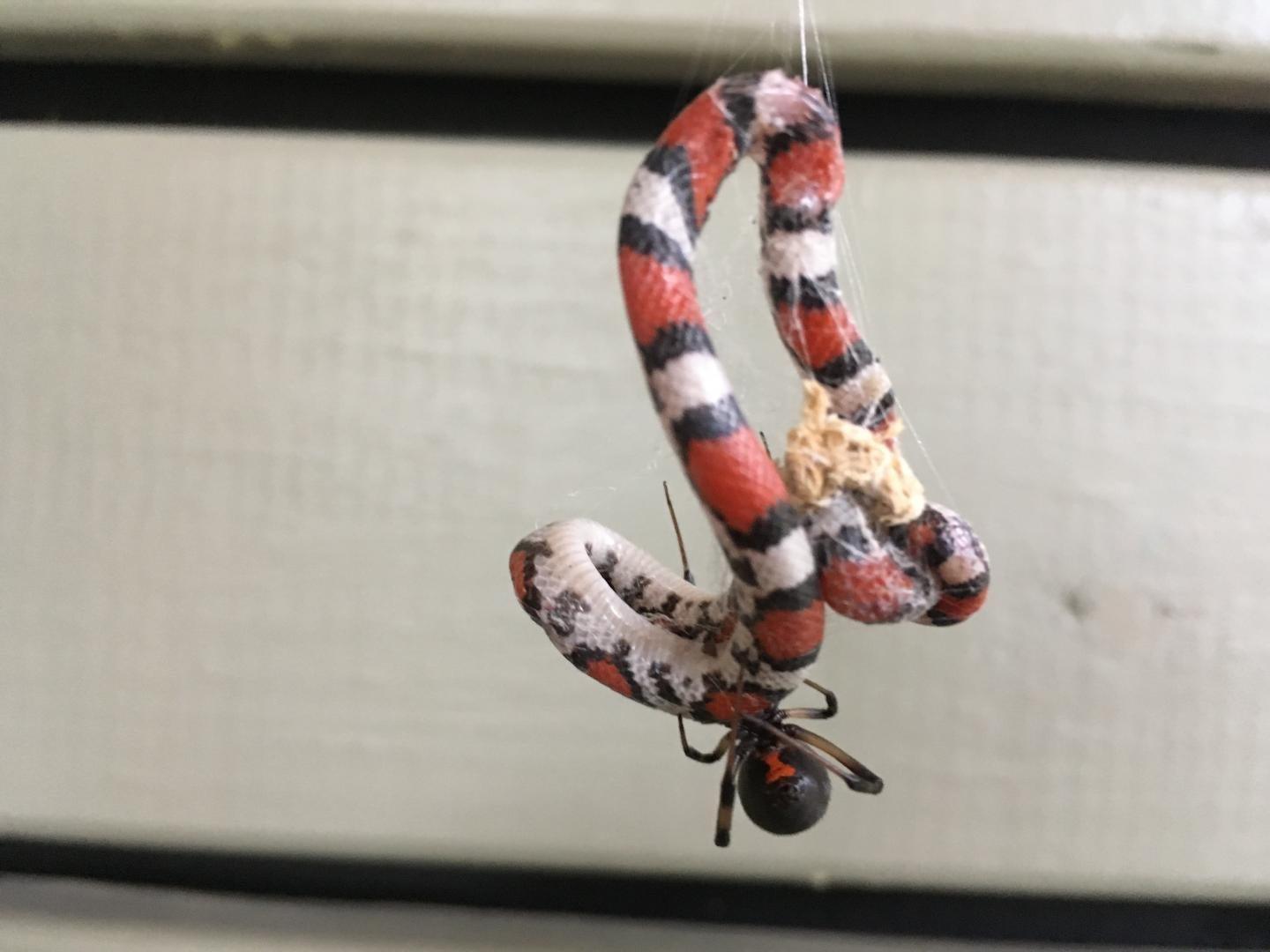Spider species around the world can catch and eat snakes, according to new study
- Published
- comments

A juvenile scarlet snake trapped in the web of a brown widow spider
When it comes to phobias, lots of people would admit that spiders and snakes are both high up on the list of their most feared creatures.
However, a new study suggests that it's snakes that should perhaps be scared of spiders!
Most spiders are insectivores, which means they mainly feast on insects, but the study found that some turn to small snakes for their meals - yum!
Dr. Martin Nyffeler, who is an arachnologist at the University of Basel, and Professor Whitfield Gibbons who is a herpetologist at the University of Georgia, USA carried out lots of research to find out more.
They looked at 319 different reports of times when spiders had fed on snakes and found that that the arachnids munch on the limbless reptiles on every single continent apart from Antarctica, 80 percent of the incidents they studied happened in either America or Australia.
In Europe, cases of spiders eating snakes was a lot less common, making up just 1 percent of the reported occurrences.
They also found that the examples that took place in Europe were limited to small web-building spiders eating tiny, non-venomous snakes.
The data also showed that spiders from 11 different families are able to catch and eat snakes.
"That so many different groups of spiders sometimes eat snakes is a completely novel finding," said Dr Nyffeler.
Top spider facts with spider expert Simon Garrett
When a spider catches a snake, it will often spend hours or even days feasting on it!
Spiders don't have a regular feeding pattern like many humans do. When there's a lot of food available, they tend to eat more than they need and they can end up going hungry for long periods again afterward.
They store excess food as energy reserves in their body and use it to keep them going during longer periods of starvation.
Black widows spiders were found to be the most successful at catching and eating snakes, making up around half of all the reported incidents.
It's believed to be down to their special venom which contains a toxin which is able to specifically target the nervous systems of reptiles like snakes.
"While the effect of black widow venom on snake nervous systems is already well researched, this kind of knowledge is largely lacking for other groups of spiders. A great deal more research is therefore needed to find out what components of venoms that specifically target vertebrate nervous systems are responsible for allowing spiders to paralyze and kill much larger snakes with a venomous bite," said Dr Nyffeler.
Black widows spiders were found to be the most successful at catching and eating snakes
Black widows also tend to build webs made from extremely tough silk which can help them capture larger prey animals like lizards, frogs, mice, birds and snakes.
The study found that spiders are able to capture snakes from seven different families and they're able to outfight snakes 10 to 30 times their size!
The largest snakes caught by spiders are up to one metre long, however the smallest is just six centimetres. The average length of the snakes caught was 26 centimetres and most of these were freshly hatched babies.
Although spiders often use their venom to take down snakes, the reptiles aren't completely helpless. About 30 percent of the snakes captured are also venomous.
In fact, in the US and South America, spiders are sometimes able to kill highly venomous breeds like rattlesnakes and coral snakes.
Some types of spiders are able to take down the highly venomous brown snake
In Australia, brown snakes, which are also highly venomous, are often eaten redback spiders.
"These brown snakes are among the most venomous snakes in the world and it's really fascinating to see that they lose fights with spiders," said Dr Nyffeler.
- Published25 September 2023
- Published20 September 2018
- Published16 August 2018
